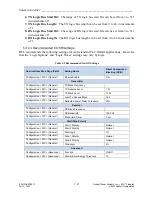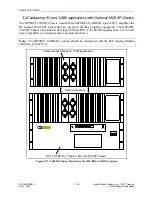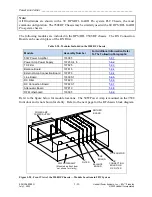
Power Line Carrier ____________________________________________________________________
RF-MCGARDPRO
Hubbell Power Systems, Inc.
–
RFL™
Products
July 1, 2022
©2022 Hubbell Incorporated
5-37
Table 5-14. PLC Calibration
Description
When
Receive Auto-Set
Sets up the PLC unit for optimum
performance on a particular PLC channel.
Once the channel has been optimized, this
procedure calibrates the PLC for the
nominal carrier receive level (0 dB),
setting up operation of things like front-
panel CLI meter, Rx alarms, etc.
This procedure is the most commonly run calibration procedure
and is typically the only one that needs to be done in the field. It
should be run:
-
Any time there is a change made to the PLC system which
affects the carrier receive level
-
At commissioning, after all channel elements (traps, tuners,
hybrids, etc.) have been installed and tuned.
Set TX Monitor Level
Calibrates the “TX Power Level”
indication on the Status page and as
reported over DNP.
This is a factory-calibration procedure. This procedure is
typically not done in the field. It is factory-set for 50-ohm
applications
Set Reflected Power Monitor Level
Calibrates the “Reflected Power Level”
indication on the Status page and as
reported over DNP.
This is a factory-calibration procedure. This procedure is
typically not done in the field. It is factory-set for 50-ohm
applications.
Running Receive Auto-Set
The procedure is displayed in the GUI under PLC calibration: TEST-> Calibrate PLC
5.5.3 Rear Module Adjustments
Equipment Requirements
The following equipment is required to perform the commissioning procedure:
•
Frequency-selective voltmeter (FSVM). Signalcrafters, PowerComm, etc.
•
Small Flat-head screwdriver (pot tweaker)
•
50-ohm load or dummy load (minimum 10W rating)
Adjustments are made to the PLC Analog Module rear panel as shown below.
















































